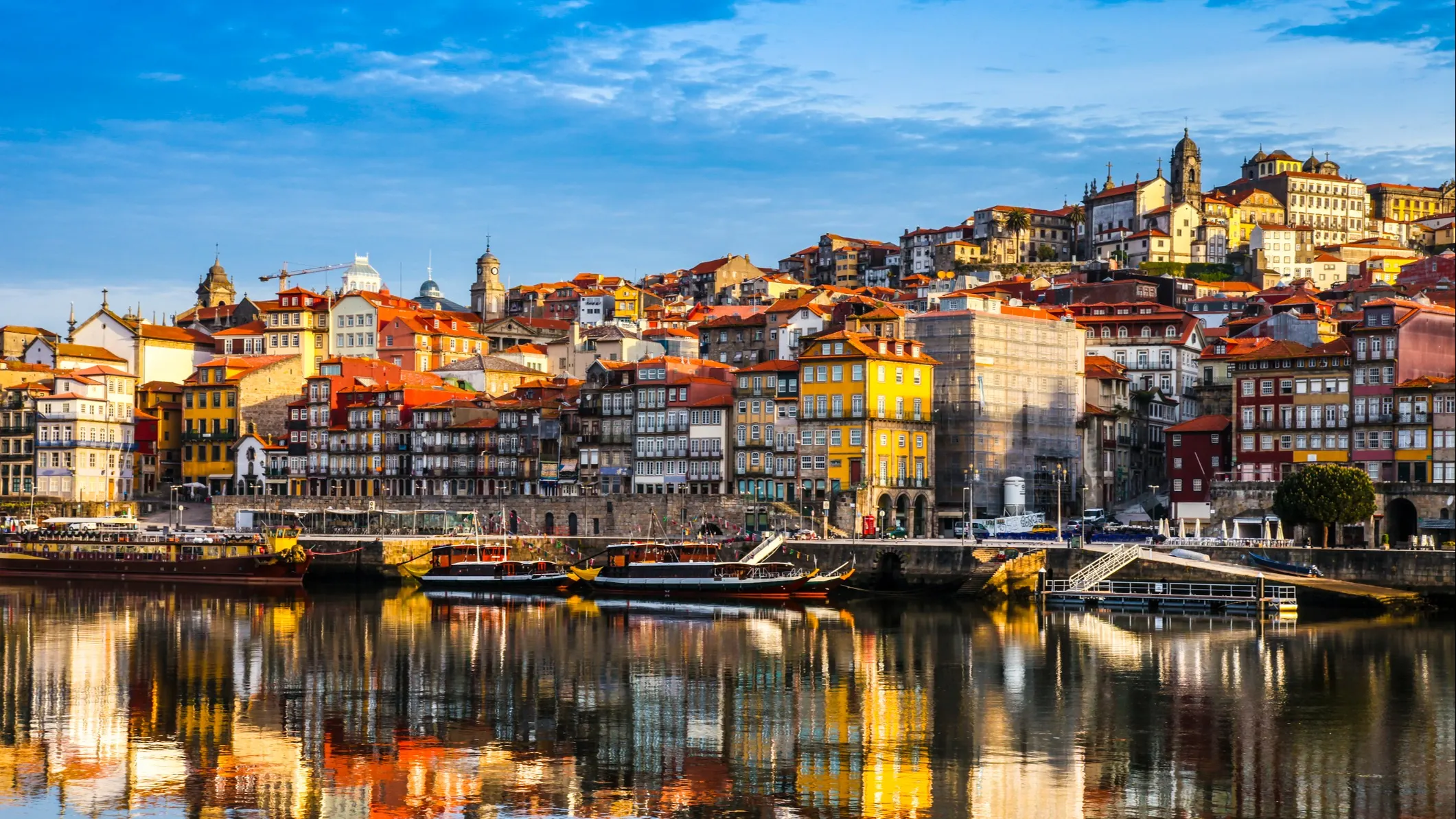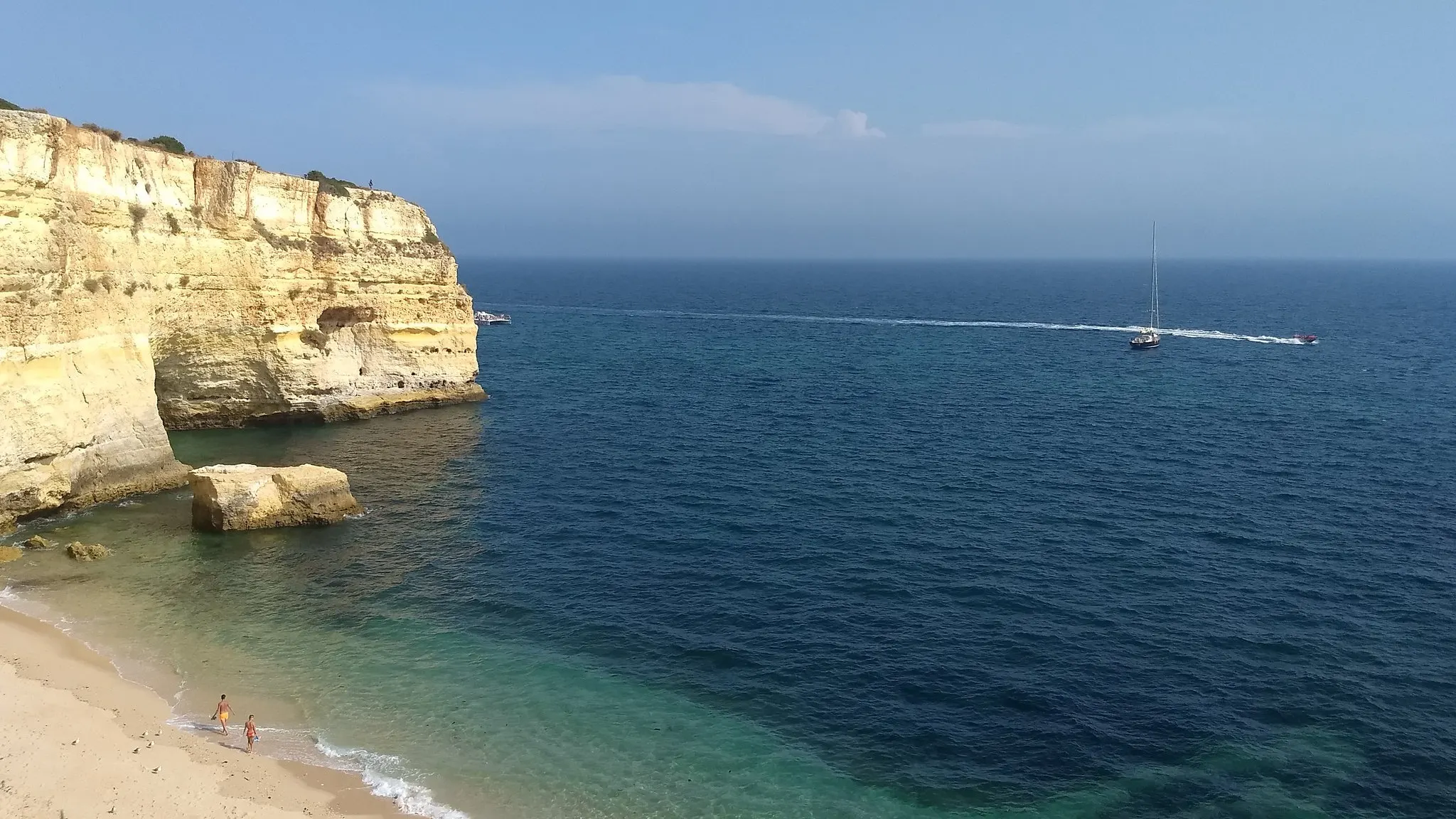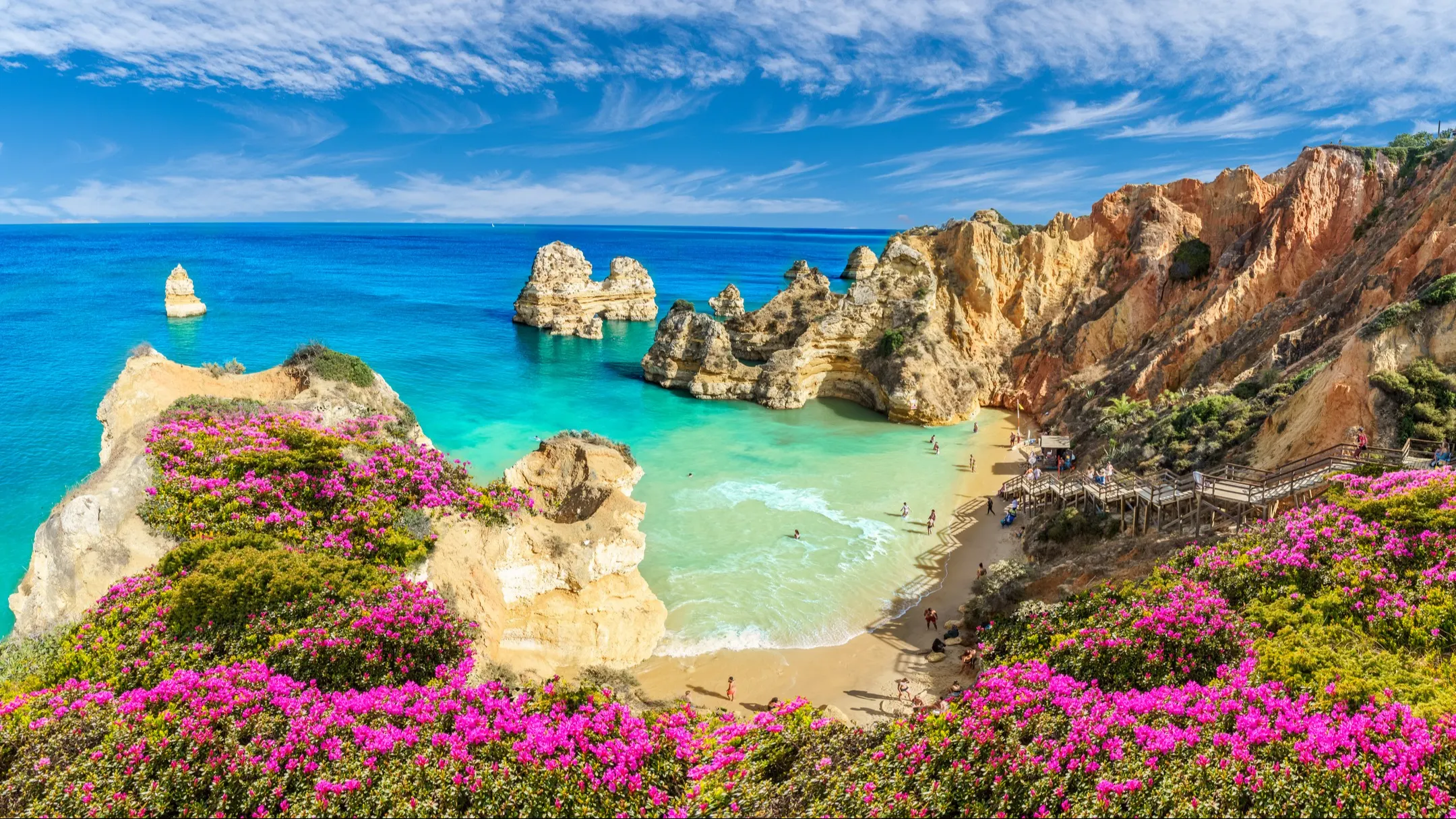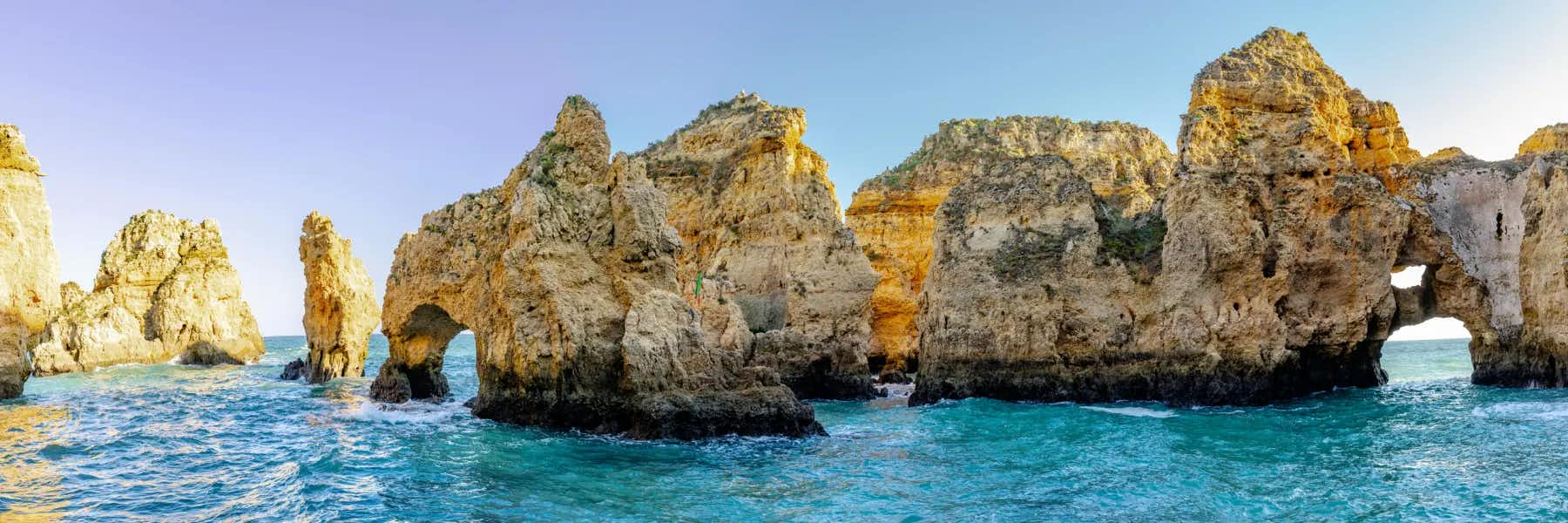Books and internet searches can give you a sense of Portugal, but they are no substitute for hands-on experience. Sooner or later, you must visit this delightful land. When you plan to make your journey here, remember: No matter how much time you allow for a vacation in Portugal, it will never be enough.
Steeped in history and culture, the country has a pleasant climate year-round in most regions, as well as an extremely affordable cost of living. Whether you are looking for surfing beaches or ancient ruins, fine museums or hiking paths, a place to windsurf or to polish your golf game, you will find it in Portugal.
It’s easy to get around. Public transportation is efficient and inexpensive, and most visitors and expats find they get along quite well without a car. But plan on renting your own wheels for at least a few days of your exploratory trip to the country. It would be a shame not to investigate some of the out-of-the-way towns where you can glimpse authentic Portugal: its people, architecture, breathtaking scenery, and homemade cuisine.
Get Your Free Portugal Report Today!
Get Your Free Portugal Report Today!
Discover why we love a slower pace of life in Portugal and info on other European countries in our daily postcard e-letter. Simply enter your email address below and we’ll send you a FREE REPORT – Explore the Old World in Laidback Portugal.

By submitting your email address, you will receive a free subscription to IL Postcards, The Untourist Daily and special offers from International Living and our affiliates. You can unsubscribe at any time, and we encourage you to read more about our Privacy Policy.
Where is Portugal?

Portugal is located on the Iberian Peninsula, in the southwest corner of Europe. It shares that peninsula with its larger neighbor, Spain, which occupies about five-sixths of the land mass. At roughly 35,000 square miles, Portugal is about the size of the state of Indiana, just under 350 miles from north to south and about 135 miles across from west to east. It’s bordered by Spain on the north and east, and the Atlantic Ocean on the west and south.
In addition to the mainland, Portugal also includes two autonomous regions. Madeira is an archipelago comprising four islands off the northwest coast of Africa. Funchal is the capital of the main island, also called Madeira, which is volcanic and green, with jagged cliffs and a sub-tropical climate.
The Azores is also an archipelago. São Miguel is the largest of these islands, featuring spectacular landscapes, wild hydrangeas, quaint fishing villages, and lake-filled calderas.
Portugal’s population is just over 10 million, with much of it concentrated in key urban centers. The capital, Lisbon, has around 517,800 residents, while Porto, the second-largest city, is home to approximately 249,600.
To the south, the Algarve—Portugal’s sun-soaked coastal region famous for its beaches, golf courses, and expat communities—has a population of roughly 467,000.
Other notable cities include Amadora (about 178,800), just outside Lisbon; Braga (around 121,400) in the north; Coimbra (approximately 106,600) in the central region; and Setúbal (about 117,100) near the capital.
In contrast, Portugal’s interior regions, including Alentejo and Trás-os-Montes in the northeast, are far more sparsely populated. These areas are known for their rolling hills, small villages, and historic towns, and offer a peaceful, traditional lifestyle for those looking to escape the crowds.
How to Get There

Many airlines offer flights from Los Angeles and New York to Porto and Lisbon. Among them are American Airlines/British Airways, Delta/Air France, Air Canada, TAP Portugal, and United/Lufthansa.
As far as price is concerned, recently a round-trip ticket on Delta was available from Los Angeles to Lisbon (in the off season) for around $1,171, depending on travel days and length of stay. That ticket, however, was non-changeable and nonrefundable. Attempting to alter the return date would result in the traveler losing that portion of the ticket and would require a new one-way ticket to be purchased.
The fares from gateway cities in North America to Portugal vary very little, and therefore the above example is illustrative in general. Obviously, it’s essential to plan well, and in advance. Perhaps you may want to investigate travel insurance. Some sites we use to compare prices or purchase tickets are Kayak; One Travel; and CheapO Air.
Currently, there are no nonstop flights from the US to Porto. There are, however, nonstop flights to Lisbon from many US and Canadian cities. Good News! As of June 2024, United Airlines will be offering direct flights from Faro to Newark, and other airlines will surely follow suit.
This site keeps a list of the flights available and their originating cities: www.lisbonguru.com/flights-us-cities-lisbon-airlines-fares/. If you arrange a flight with stops, be prepared to spend about 15 to 17 hours in travel time from the West Coast of the United States to your destination is Portugal. From the East Coast, plan on four or five hours less, depending on the itinerary and price you choose.
TAP Portugal and EasyJet provide frequent flights from London and other European destinations to Porto, Lisbon, and Faro (as well as to and from other European destinations). Depending on the time of year, day of the week, time of day, and length of stay, some great deals can be found. A one-way fare from London to Porto can be found for less than $160.
Another airline to check for deals is Ryanair, and don’t forget companies that specialize in comparing flight prices for you, such as Skyscanner, Expedia, and the aforementioned Kayak. Remember that the more budget-friendly the airline, the less travel-friendly it usually is: Prepare for fees for virtually all incidentals: checked baggage, carry-on baggage, food, beverages, water, etc. Often, when comparing the add-on fees, the cost will come very close to the traditional airlines, which provide slightly more in-cabin comfort.
In-Country Flights
Within Portugal, you can take regularly scheduled flights to the country’s major cities. Flights are reliable, and prices are reasonable. As with your flight from the US, Canada, the U.K., or elsewhere to Portugal, planning ahead and choosing to fly at a non-peak time—midweek, for example—will more likely ensure a low-cost price tag for your journey. The one-hour flight from Porto to Lisbon on TAP Portugal can cost as little as $95. Keep in mind, however, that even though flight time is only about one hour, by the time you arrange transport to and from airports to your hotels, it can easily become three to four hours of total travel time. The train is only about four hours, at most. The price is about the same, and the comfort level is as good if not better. See the section below about public transport for more information.
Renting a Car
To rent a car, you must be aged 25 or over, and it may be a good idea to have an international driver’s license (available for those 18 and over) if you are from the US or Canada. Some car rental agencies require them. In the States, you may obtain this from the Automobile Association of America for a small fee if you are a member or check your local Department of Motor Vehicles. If you are between the ages of 21 and 24, you may be able to find a rental car; however, you will usually pay an underage fee that can be €100 ($105) or more.
Additionally, some providers have a maximum age for renters. It depends on the company, but it can start as low as 70 years of age. Be sure to check with the company to confirm your eligibility if you are under 25 or over 70 to ensure there are no surprises once you arrive.
Rental car insurance may be a good idea depending on your personal auto policy and the credit card benefits you have. Check before leaving home and purchase the daily insurance if you are not covered. Some insurance on personal injury coverage may be necessarily included in your contract with the rental company, anyway. Confirm pricing and coverage ahead of time in order to avoid a big surprise at the rental counter on arrival. Generally, though, it is as seamless as renting in the US or Canada.
All the major rental car companies like Hertz and Avis operate in Portugal, but why not look into a company like Europcar to find a cheaper rate? One website that will search all the car rental companies for you is www.autoeurope.com.
Remember to request a vehicle with automatic instead of standard transmission (the more common type in Europe) if you are not familiar with using a stick shift.
Terrain and Climate

Sinuous rivers, rugged mountains, wildflower-filled meadows, and glittering, sun-kissed beaches. This is Portugal. Here’s a breakdown of how the country looks.
In the northeast, close to Spain, the topography is mountainous, with a range extending down the right side of this slip of a country until it reaches the flat plains of the Alentejo region. The Douro River separates the northern region from the central region, and the Tejo River delineates the center of the country from the Alentejo region (literally, “below Tejo”). The area known as the Algarve is in the far south.
In the north, the climate is sunny and warm in summer. The coast is warmed by the Gulf Stream, so winters are reasonably mild, with temperatures ranging from about 46 F to 60 F. There is, however, substantial rainfall in the region. All conditions combine to create the ideal climate for the cultivation of one of Portugal’s best-known and best-loved exports: port wine.
The left side of the country offers fishing villages and beaches from Viana do Castelo (on the Green Coast) in the north through the Silver and Lisbon coasts, which become milder in climate and less rainy as you proceed south, culminating in tourist meccas like Albufeira in the Algarve.
Political Structure
Portugal is a representative democratic republic with a multi-party system. Since 1975, it’s been dominated by the social democratic Socialist Party and the liberal-conservative Social Democratic Party. The prime minister is the head of government and the executive head of state. He is joined in the exercise of his political powers by the Council of Ministers.
Legislative power is vested in both the government and the Assembly of the Republic, while the judicial branch is independent of both other branches.
Language
Continental Portuguese is the official language of the country, although dialects differ from north to southern and central regions. English is spoken widely in major cities, and even elsewhere, but it’s advisable to have a working knowledge of the basics, for your own benefit, as a sign of respect to the locals, and if you plan on exploring remote regions.
Popular Areas of Portugal

The North/Green Coast
In addition to Porto and Vila Nova da Gaia, other cities worth seeing here include:
Viana do Castelo: An important port town close to Spain, primarily Portuguese in flavor.
Braga: Ancient Roman roots and home to Minho University.
Guimarães: Administrative base of the first king of Portugal, Afonso Henriques.
The Silver Coast
Figueira do Foz: Beaches and one of the largest casinos on the Iberian Peninsula.
Nazaré: Surfer’s paradise, with its record-setting waves.
Óbidos: Walled, well-preserved, medieval gem famous for cherry liqueur.
Central
Coimbra: Former capital of the country, home to one of Europe’s oldest universities.
Lisbon and its Coast
Cascais: Village on the bay, expat haven, once known as “The Portuguese Riviera.”
Monte Estoril: Glorious beaches and the casino that inspired Ian Fleming.
Sintra: Fairy tale castles, palaces, souvenir shopping, and Madonna.
The Alentejo
Évora: Roman ruins and yet another university.
Marvão: Mountain-top castle and a tiny town with craft stores and cozy restaurants.
Others of note: Elvas, Estremoz, Beja.
The Algarve (Take your pick)
Albufeira, Silves, Tavira, Faro, Portimão, Lagos, and Vilamoura, among others. Tennis, golf, and boating against a backdrop of sand, sea, and sun.
Get Your Free Portugal Report Today!
Get Your Free Portugal Report Today!
Discover why we love a slower pace of life in Portugal and info on other European countries in our daily postcard e-letter. Simply enter your email address below and we’ll send you a FREE REPORT – Explore the Old World in Laidback Portugal.

By submitting your email address, you will receive a free subscription to IL Postcards, The Untourist Daily and special offers from International Living and our affiliates. You can unsubscribe at any time, and we encourage you to read more about our Privacy Policy.












